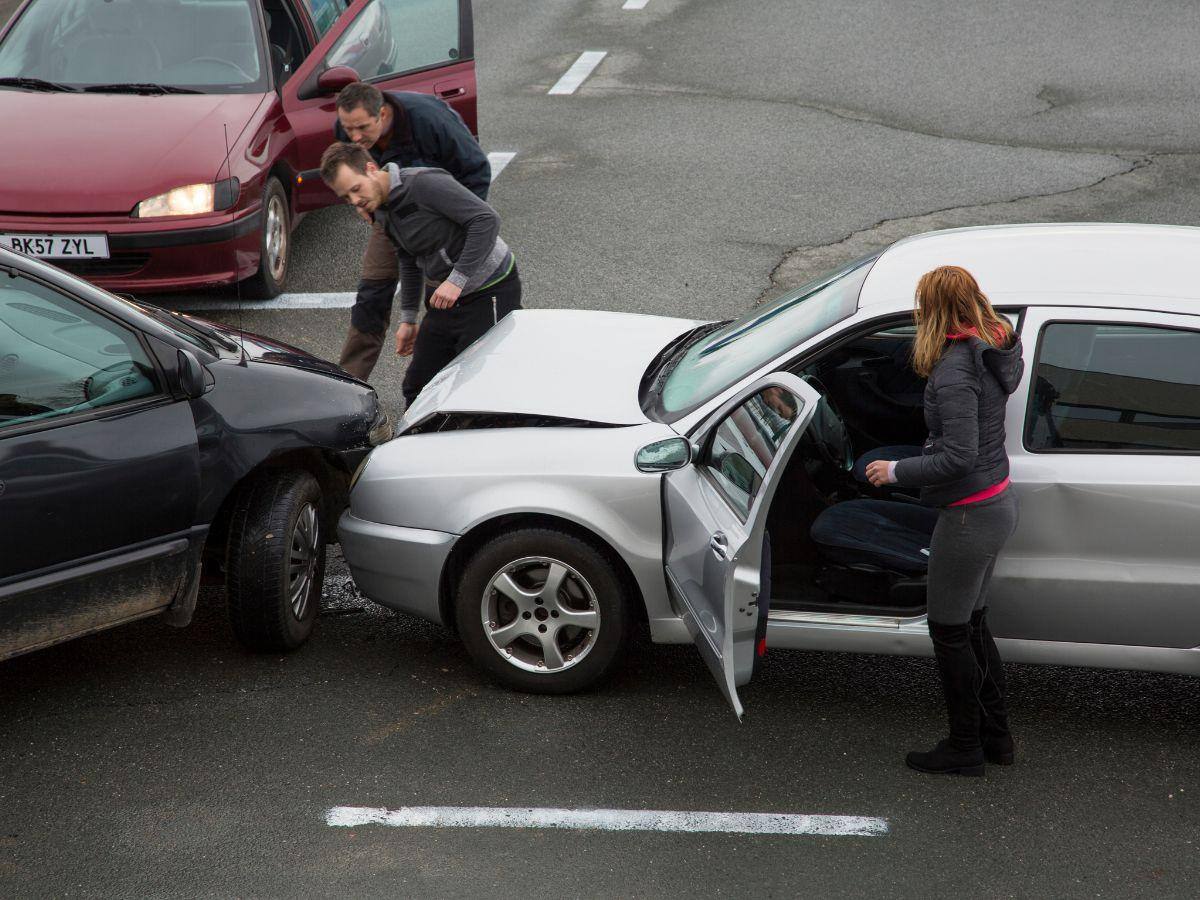Who’s At Fault In A Multi-Car Accident?
Key Takeaways: Determining fault in a multi-car accident involves assessing each driver's actions and the evidence from the accident scene....
Key Takeaways:
Distracted driving is a significant issue that causes thousands of accidents each year.
In 2022 alone, distracted driving claimed 3,308 lives, according to the National Highway Traffic Safety Administration (NHTSA).
While smartphone apps are designed to reduce distractions and save lives, these very tools can become distractions themselves.
Striking the right balance between leveraging technology and maintaining safe driving habits is essential.
Addressing this challenge is crucial to improving road safety and reducing the number of distracted driving-related incidents.
Discover how you can effectively balance technology use with safe driving practices to keep our roads safer for everyone.
From a personal and legal standpoint, car accidents can be difficult to handle. Learn more about the benefits of hiring a car accident attorney.
Table Of Contents
Ironically, drivers today rely on smartphone apps to prevent distracted driving, but this reliance can create a false sense of security.
Although these apps are designed to reduce distractions, they often lead to inattentiveness on the road - increasing the risk of having to manage the consequences of a car accident, and all they entail.
Drivers may assume that using apps like DriveSafe.ly or LifeSaver, which block incoming calls and texts, makes them immune to the dangers of distracted driving. However, depending on technology without staying aware of the road sets the stage for accidents.
Advanced safety features like lane-keeping assist and crash avoidance technology can also give drivers a false sense of invincibility.
While these features are beneficial, they can foster the mistaken belief that the car will prevent all accidents, leading to reduced attention to potential hazards.
This cognitive distraction can have serious consequences, particularly when drivers encounter unexpected road conditions.
In real-world scenarios, some drivers have ignored warning signs, trusting their technology to handle everything. Unfortunately, this overreliance has been linked to numerous distraction-related crashes, especially among teen and novice drivers.
Ultimately, while these tools can be helpful, they are no substitute for staying focused and maintaining safe driving habits.

Hands-free devices and smartphone apps are often marketed as solutions to reduce distracted driving.
However, their complex user interfaces can sometimes lead to cognitive distractions. Many of these apps require excessive interaction, diverting the driver's attention from the road.
Although the intention is to enhance road safety, these devices can have the opposite effect when they demand more focus than expected.
Consider popular navigation apps like Waze and Android Auto. While designed to provide real-time traffic updates and turn-by-turn directions, they often require user input while driving.
Drivers may find themselves adjusting settings, reporting incidents, or changing destinations, which can lead to visual distractions and a higher risk of accidents.
These apps might also display notifications or alerts, tempting drivers to take their eyes off the road. Even with hands-free technology, interacting with navigation apps while driving can be dangerous.
It's important to recognize that cognitive distractions caused by complex app interfaces are not exclusive to novice or teen drivers. Experienced drivers can also face risks when making split-second decisions to adjust settings or respond to prompts.
While smartphone apps have certainly made some tasks more convenient, they can inadvertently contribute to distracted driving accidents. This highlights the need for all drivers to minimize interactions with these devices while on the road.
Apps that block incoming calls and texts have become popular tools for combating distracted driving.
These apps aim to reduce distractions by automatically preventing phone calls, texts, and notifications while driving. However, they can give drivers a false sense of security, leading them to feel immune to the dangers of using electronic devices on the road.
This false confidence may result in dangerous behavior and cognitive distractions. While blocking apps can limit hand-held cell phone use, they do not eliminate other forms of distracted behavior.
Drivers might still interact with their mobile phones to access navigation apps, adjust climate controls, or check other notifications. This suggests that drivers have not fully adopted safer driving habits despite using these tools.
Inattention to road conditions remains a significant risk, as these apps cannot prevent distractions from other sources, such as adjusting the radio, eating, or engaging in conversations with passengers.
The reality is that no app can fully compensate for inattentive driving. Relying too heavily on smartphone apps without embracing proper safe driving practices can still lead to distracted driving accidents, putting drivers at risk of injury and even fatal crashes.
To stay safe, drivers must develop mindful driving habits that go beyond relying on technology.
Driving score and monitoring apps like TrueMotion are designed to encourage safer driving habits by tracking behaviors such as speed, braking, and phone usage.
These apps reward drivers with higher scores for good behavior, offering incentives like insurance discounts or rewards. However, safety advocates have raised concerns that the pursuit of better scores may lead drivers to engage in dangerous behaviors, resulting in poor judgment behind the wheel.
In some cases, drivers become overly focused on improving their driving scores, paying more attention to the app than to the road. For example, a driver might make abrupt changes in speed or braking to achieve a higher score, creating sudden shifts in driving patterns that increase the risk of accidents.
This distraction shifts focus away from real-world road conditions, leading to potential hazards and cognitive distractions.
Safety advocates caution that these apps, while well-intentioned, may have unintended consequences, particularly for inexperienced or teen drivers. The constant monitoring and scoring can cause undue stress, leading drivers to make risky decisions to improve their performance.
Ultimately, driving score apps can contribute to distracted driving accidents, undermining their original goal of promoting safer roads.

Apps that provide traffic, weather, and hazard updates are intended to help drivers avoid potential risks. However, they can unintentionally cause cognitive distractions and inattention blindness.
When drivers focus more on incoming alerts than on the road, they may miss critical visual cues, increasing the likelihood of an accident. This phenomenon, known as inattention blindness, occurs when the brain is overwhelmed with information from electronic devices, causing drivers to overlook hazards directly in their path.
This issue is particularly concerning for school bus and commercial motor vehicle drivers. Their larger and harder-to-maneuver vehicles mean that any moment of inattention can lead to severe distraction-related crashes.
Traffic alerts that are meant to enhance safety can instead become a source of dangerous distractions, diverting attention away from road conditions and increasing the risk of motor vehicle crashes.
Safety advocates warn that even seemingly helpful alerts can have unintended consequences, especially for drivers who need to maintain heightened awareness, such as those operating school buses or commercial vehicles.
Ultimately, reliance on apps providing constant updates can lead to serious injury crashes and even fatal accidents, highlighting the need for drivers to focus on the road and limit interactions with technology.
Staying focused on the road and not over-relying on apps for safety is crucial for avoiding distracted driving accidents.
While smartphone apps and advanced safety features can be helpful, they are no substitute for maintaining full attention while driving. Drivers should adopt a mindful approach to technology, minimizing interactions with electronic devices to reduce the risk of injury crashes and fatal accidents.
If you or a loved one has been involved in a distracted driving crash, consulting an experienced accident lawyer with the Cotto Law Group can provide valuable legal guidance and support to protect your rights.
Ten facts about distracted driving include: it is a leading cause of crashes, involves three types of distraction (visual, manual, and cognitive), texting while driving is especially dangerous, teens are most at risk, hands-free devices still cause distractions, crashes occur within seconds of distraction, apps designed to prevent distraction can sometimes contribute to accidents, distracted driving causes thousands of deaths yearly, many states have texting bans, and it increases insurance rates.
Distracted driving causes accidents by diverting a driver's attention away from the road, whether visually, manually, or cognitively, leading to slower reaction times and an inability to respond to potential hazards effectively, which increases the likelihood of crashes.
Around 14% of all fatal crashes are caused by cell phone use, according to the National Safety Council, making cell phone distractions a significant contributor to accidents.
Five examples of distracted driving include texting or using a cell phone, adjusting climate controls, eating or drinking, interacting with passengers, and using in-car navigation systems.

Key Takeaways: Determining fault in a multi-car accident involves assessing each driver's actions and the evidence from the accident scene....

To secure maximum compensation in court for car accident victims, it is essential to identify a clear determining factor that establishes who exactly...

Key Takeaways: Why You Should Never Admit Fault After a Car Accident: Admitting fault can negatively impact your insurance claim and legal...